If you live near the coast or anywhere hurricanes can occur, having a plan of action to deal with them is crucial. In addition to following an ongoing hurricane maintenance checklist for your home, there are several must-dos when a storm is forecast for your area.
Our hurricane maintenance guide provides information on how to prepare yourself, your family and your home for the inevitable severe weather in your location. We also cover what to do when a storm is approaching and what to do after the storm.
Key takeaways:
Hurricane preparedness is year-round.
Right before a storm, clean up your yard, board up windows and prepare your emergency kit.
Outside of hurricane season, fix broken windows, service your generator and make sure there are no leaks in your roof.
Hurricane preparedness is year-round; here’s why
Hurricanes are breaking more weather records than ever. According to the Federal Emergency Management Agency (FEMA), storms are occurring before, during and after the typical seasons of earlier years. Additionally, hurricanes and other severe weather events are impacting more homes in more locations than ever before.
Many of the preparedness items on this list can take time to accomplish. For instance, repairing windows and ensuring your home’s roof is sound are things that need to occur well before a storm is imminent.
To maximize your home and family’s readiness for hurricane season, it’s essential to stay at least one step ahead of the weather by keeping emergency prep supplies on hand and maintaining your home for worst-case scenarios.
What is the most important thing to do before a hurricane?
The most important thing to do before a hurricane is to prepare for it. The Center for Disease Control (CDC) lists its top pointers for preparing for a hurricane, making a plan and getting ready for the storm. The next step is knowing what to do if you’re evacuated.
Making a plan also includes creating a year-round hurricane maintenance checklist, as well as an immediate action plan when a storm is approaching.
Tropical storm and hurricane home checklist
While the specific details of your hurricane readiness plan may vary by location and your potential exposure to storms, if there’s even a chance that your area will feel either direct or indirect effects of an event, all of the following tips will apply to you and your home.
1. Clear out rain gutters
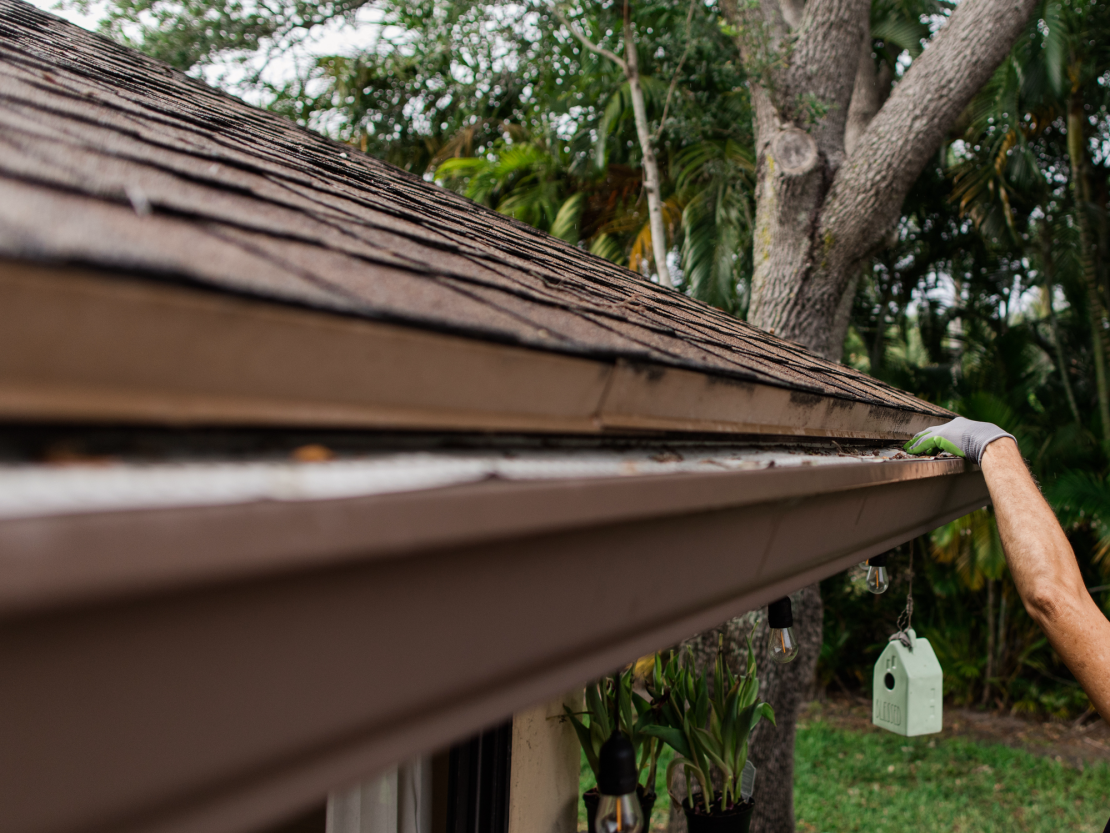
DIY friendly: Yes (but professional cleaning is recommended)
When to do it: Twice annually
Average cost: $120 - $235
Clearing out your home’s rain gutters before hurricane season can help reduce the chances of water damage to your home. Experts recommend hiring a professional to clear your gutters of debris twice a year, once in spring and again in autumn, no matter where you live, especially if you live in an area with a significant amount of trees nearby.
Another option is to install gutter guards to help prevent debris from reaching your rain gutter system. However, even if you have gutter guards, it’s still a solid idea to periodically check your gutters for cleanliness.
Want to cut down on gutter maintenance and install gutter guards? Our recommended providers: LeafGuard and LeafFilter
2. Repair existing windows, board up or install storm windows
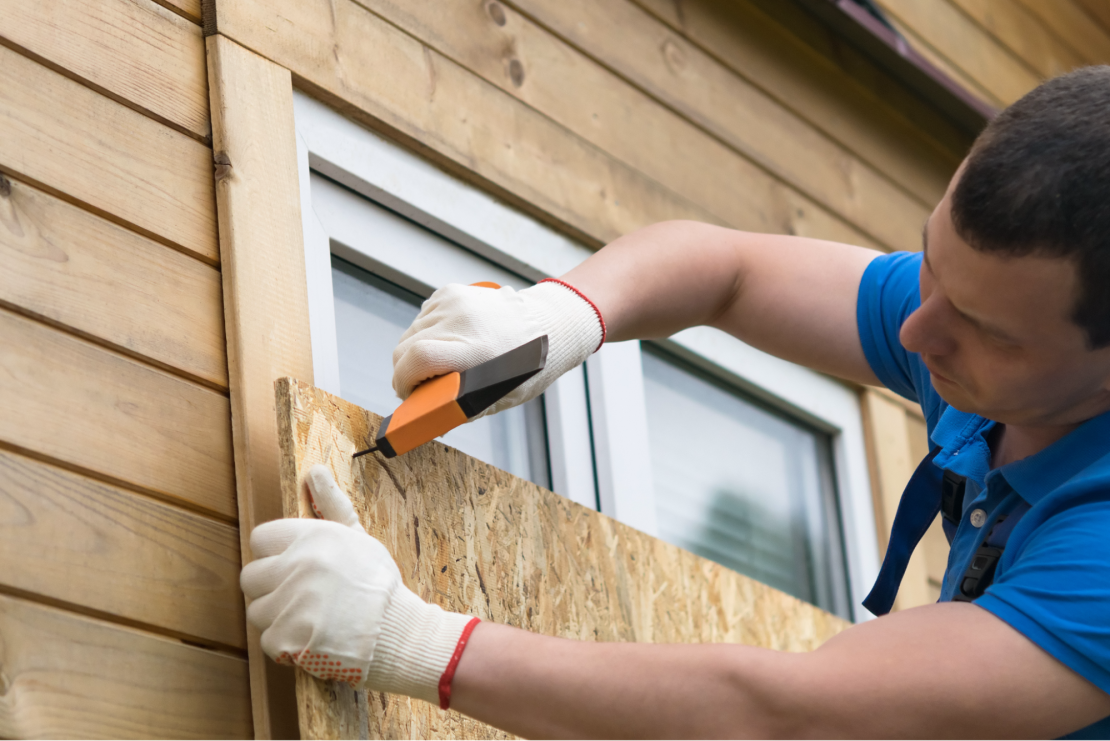
DIY friendly?: No
When to do it: Before the hurricane season and when a storm is forecast
Average cost: $420 per window
Dealing with windows in a hurricane-prone location requires extra vigilance. Keeping your windows in good condition by performing periodic window repairs and maintenance can reduce potential water damage to your home’s walls and interior during a storm. Additionally, adding storm windows over your existing windows provides an extra layer of protection.
When a hurricane becomes imminent, it’s likely time to board up your windows. Many homeowners consider this a DIY project. However, if you hire a company to perform the task, expect to spend roughly $200 per window.
Looking for new windows? Consider our top window replacement companies.
3. Inspect your roof for leaks
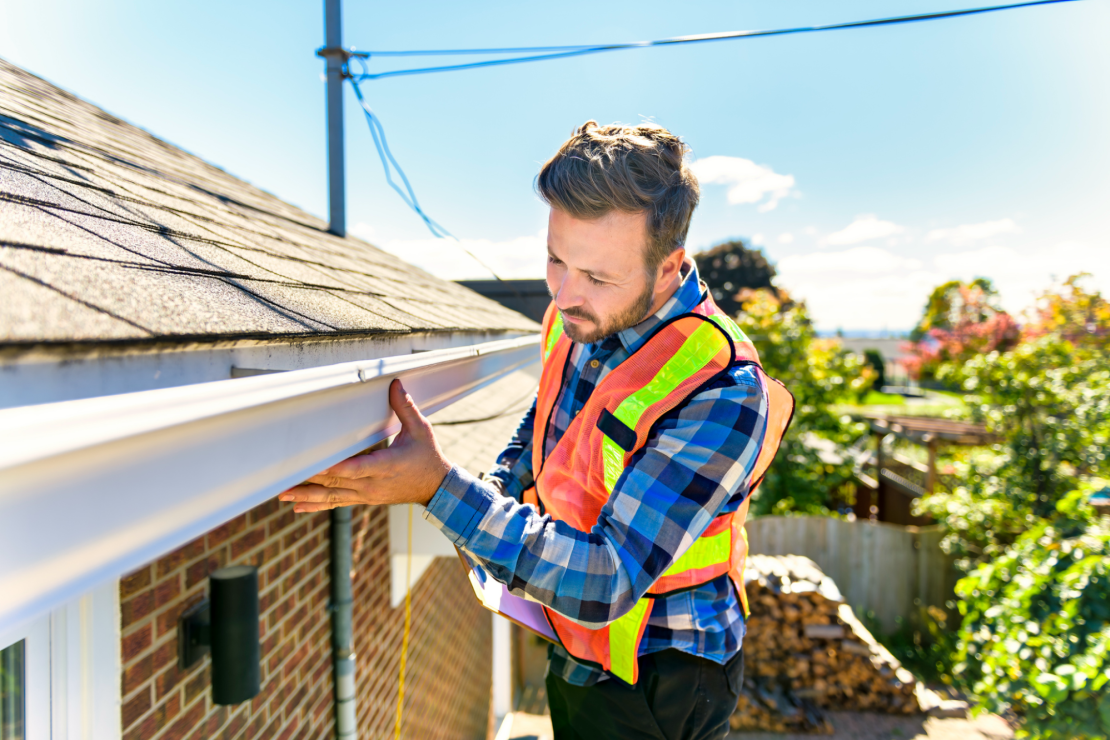
DIY friendly: No
When to do it: Annually and after a severe storm or hurricane
Average cost: $240
Your home’s roof is vulnerable to the heavy rains associated with hurricanes and tropical storms. Hiring a professional to complete an annual roof inspection costs about $240 on average and is critical to help ensure your roof is in its best condition when the storm starts.
If your location is in the direct storm area, it’s also a good idea to have a roof inspection after the event, regardless of whether damage is apparent or not.
pro tip
- If you have a home warranty policy for your hurricane-area home, consider adding roof protection to your policy if the company offers the coverage option.
4. Purchase or service your generator
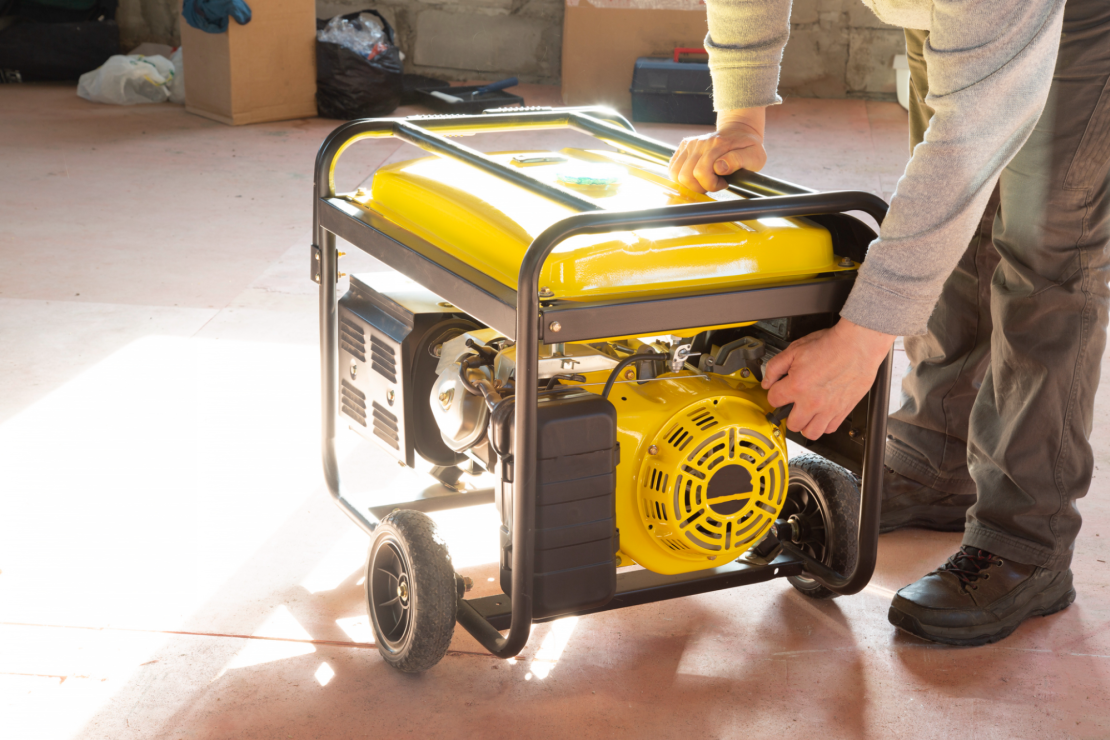
DIY friendly: No
When to do it: Annually
Average cost: $238
Losing electrical power during and after a severe weather event is fairly normal, and power outages that last for several days are common. Part of your power-outage readiness strategy should include keeping the power flowing. If your home is equipped with a diesel-powered or other generator, professional maintenance is necessary annually to keep it in top shape.
5. Prepare for power outages with a solar battery for your solar system
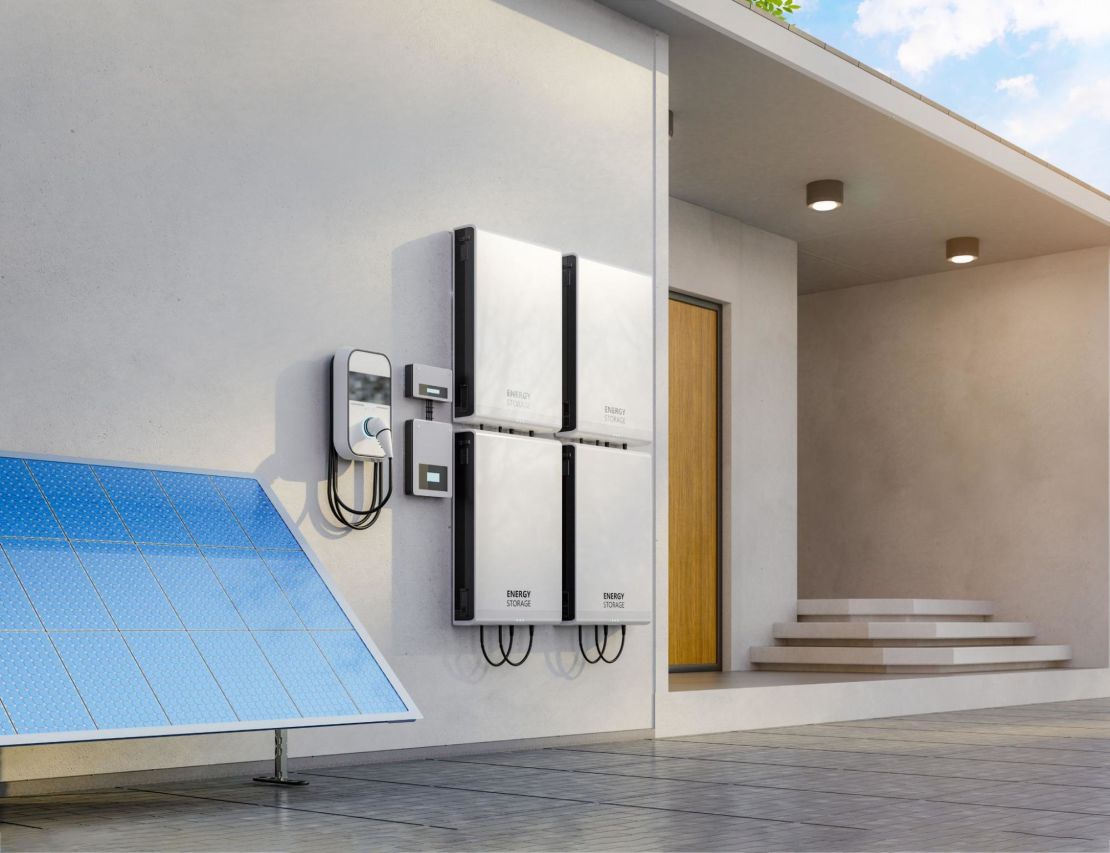
DIY friendly: No
When to do it: Anytime
Average cost: $11,800
If your home generates its own electricity with a solar energy system, it may be better off than those that rely solely on grid power when the electrical current stops flowing after a storm. However, you can help ensure a continuous energy supply by installing a solar battery for your solar energy system.
Want to help ensure your family has continuous solar energy at all times? We recommend these solar installers.
6. Trim and straighten up trees around your home
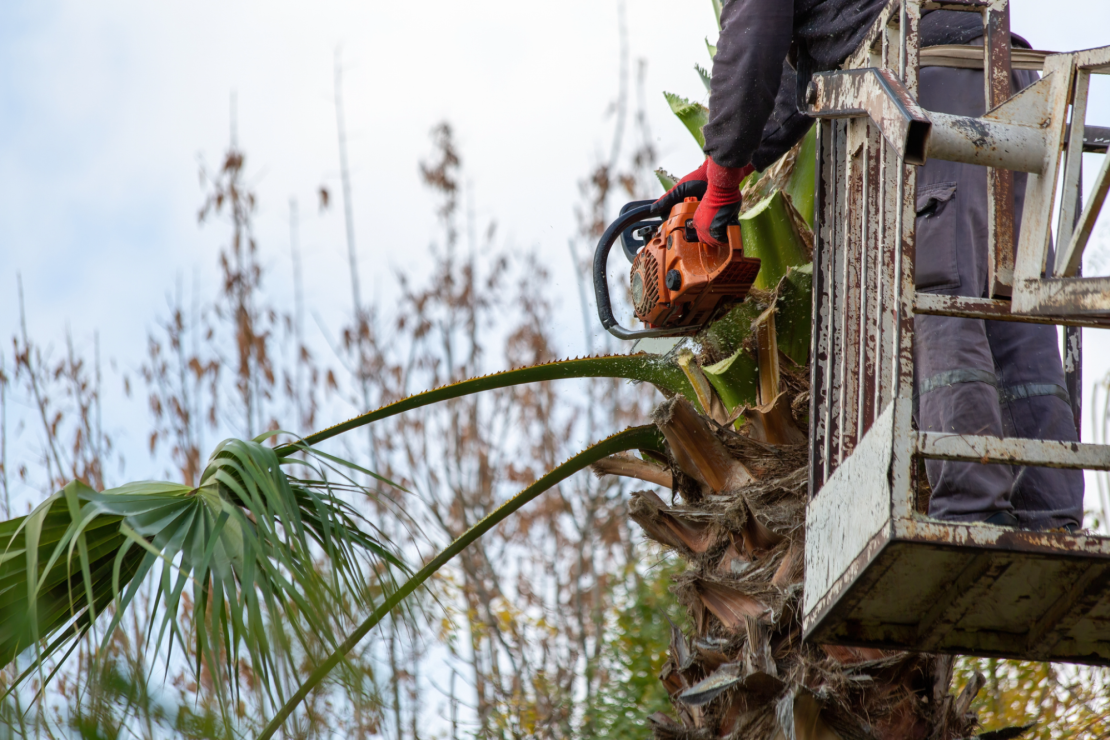
DIY friendly?: Depends
When to do it: Ongoing
Average cost: Varies
If you’re an avid DIYer, especially when it comes to your yard and outdoor living spaces, keeping the trees and bushes in your yard is likely already on your regular yard maintenance checklist. However, if the task isn’t on your list, adding it is an excellent idea in hurricane-prone areas.
Keeping trees and bushes under control helps to keep them healthy. It can also result in greater resilience to storms and fewer dead branches, which can become dangerous to people and property in high winds. We recommend hiring an arborist to manage the necessary tasks for taller trees and shrubs.
Also consider a pest control professional to treat termites, carpenter ants and other wood-boring insects before they weaken your trees.
7. Clean up the yard
DIY friendly: Yes
When to do it: Before the storm
Average cost: $0
The high winds associated with tropical storms and hurricanes are bad enough. When debris mixes with that wind, it can become dangerous to people and homes. You can do your part to reduce the amount of wind-blown debris by securely storing items in your yard, such as patio furniture, grills, trampolines, children’s toys and anything else that’s not fastened down.
8. Stock up on emergency supplies
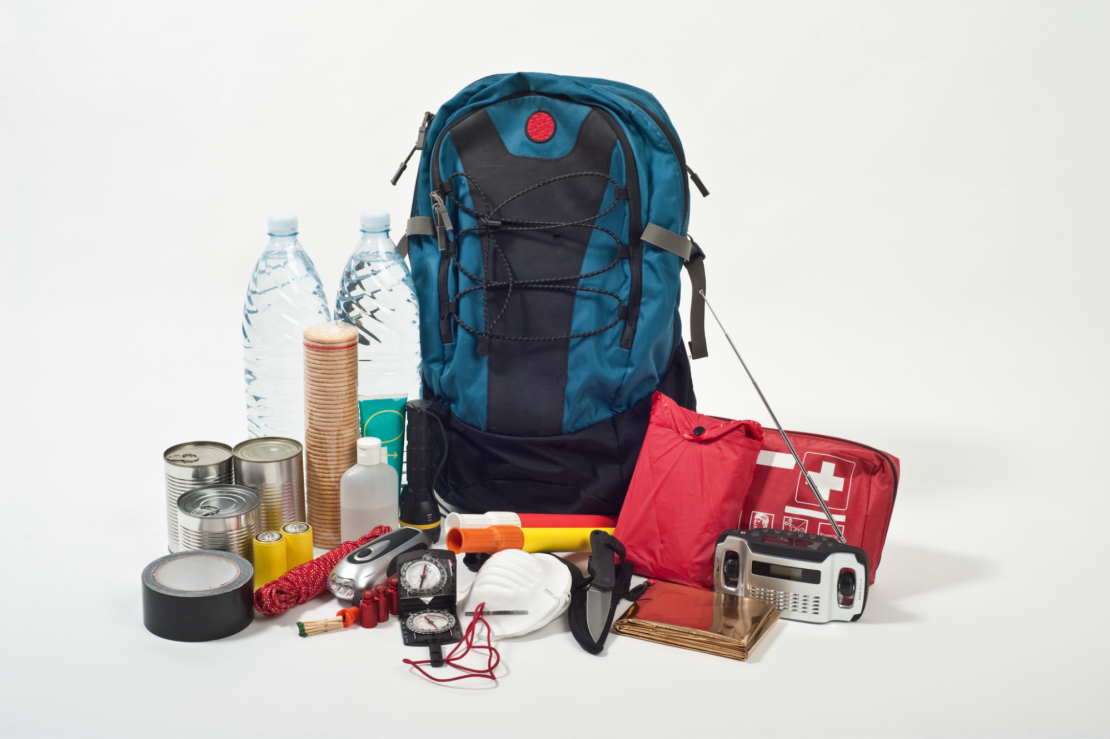
DIY friendly: Yes
When to do it: Year-round
Average cost: $150 - $600
Having emergency supplies on hand is essential regardless of where you live. Severe weather and other disasters can happen virtually anywhere, and being prepared can provide peace of mind year-round.
While your family’s needs can vary depending on the number of people in your home, their ages and their specific vulnerabilities, having a first-aid kit always on hand and considering a more substantial bug-out bag can increase your family’s readiness status.
Want to help ensure your family’s hurricane preparedness? We recommend these kits: The best bug-out bags
9. Prepare for health emergencies
DIY friendly: Yes
When to do it: Before hurricane season
Average cost: Varies
For anyone on medication or who requires ongoing medical attention, having a plan to maintain medical services in the event of a storm is crucial before hurricane season.
Ken Perry, MD, FACEP, Emergency Physician at Ken Perry, MD had this to say: “Living in South Carolina, we are always concerned with patients who are on dialysis or oxygen therapy and, therefore, need electricity. It also is important for patients on chronic medications to ensure that they have enough of their medications, especially if they are evacuating. For these patients, it is necessary to think ahead in case of hurricanes. Whether evacuating far distances or possibly to a closer medical needs shelter, it will take some work to be adequately prepared.”
10. Know your evacuation zone
DIY friendly: Yes
When to do it: Continuous
Average cost: $0
In locations where natural disasters are expected, including hurricane zones, evacuation routes are typically available and labeled as such. Learn more than one of the existing routes and create a plan for where to stay once you reach a safe distance from the area.
11. Gather and share information
DIY friendly: Yes
When to do it: When the storm is approaching
Average cost: Varies
Even with the best planning and preparedness, some last-minute storm preparation tasks will still be necessary. Gather as much information as is practical to keep updated on the coming hurricane. Additionally, share your contact information with loved ones, make sure you have any emergency phone numbers available and enable emergency alert texts on your phone if they’re available at your location.
Want to help ensure your family stays aware during an emergency weather event? We recommend these products: The best weather emergency radios
What do I need to clean up after a hurricane?
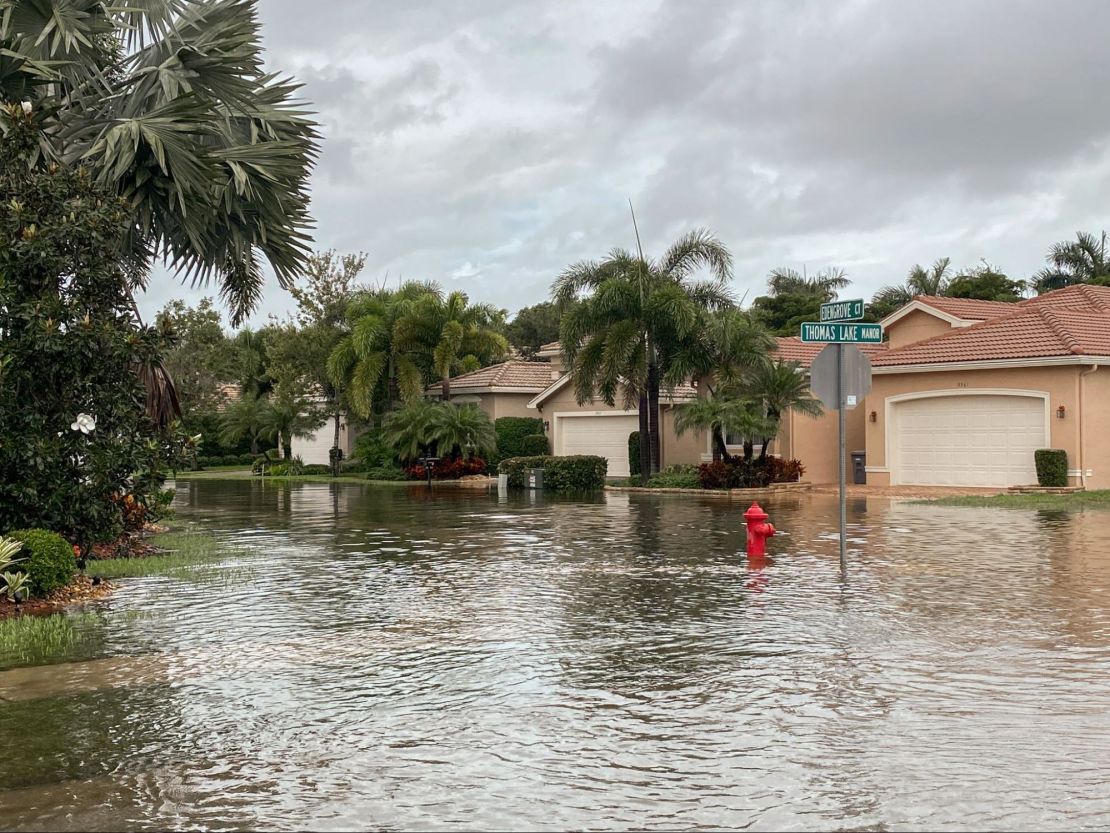
Returning to your home after a hurricane has passed requires taking some safety precautions. And if you have damage, you may need to inform your home insurance company that you need to make a claim.
Even if you’re unsure whether you’ll need to make an insurance claim, it may be important to document everything inside and outside the home just in case you need the information later. Take photos or videos of the house’s condition as you go through it and before you perform any cleanup tasks. Be sure to also photograph inside cabinets and storage areas.
When you return, you may or may not have electrical power, and floodwater can contain sewage, bacteria and other health hazards. If you choose to perform some of the cleanup tasks yourself, keep yourself safe and productive by bringing at least several N95 masks, a heavy-duty sponge, disinfectant detergent, waterproof boots, eye and ear protection, a hard hat and nitrile gloves.
What to do (and who to call) if you have water damage
If your home suffers water damage during a hurricane, call your homeowner’s insurance company first to determine the next steps. Your insurer will likely recommend contacting a water damage restoration specialist company to assess the situation and begin the cleanup process.
How to know (and what to do) if you have mold damage
If your home has water damage inside, it’s a good bet that mold growth isn’t far behind — if it hasn’t already begun. Your water damage restoration specialist can typically handle most mold problems or have a specialist company deal with the situation. In all but the most minor mold cases, having a professional mold remediation company manage the situation is your best and safest bet.
Bottom line: How to prepare your home for a hurricane or tropical storm
Making a plan and maintaining it as best as possible year-round is the best way to stay prepared for hurricane season. While several tasks can only happen when a storm is on its way, there are many more that you can do well in advance to help ensure your home and family’s safety and well-being. Following a well-planned hurricane maintenance guide and checklist all year is the best plan of action.

















